Indus-Kohistan, a land of cultural heritage, boasts historic wooden mosques and intricately carved wooden coffins or grave railings, which are located in almost every old settlement.
Indus-Kohistan, a land of cultural heritage, boasts historic wooden mosques and intricately carved wooden coffins or grave railings, which are located in almost every old settlement. These wooden monuments reflect the identity and history of their respective villages. I have travelled to various valleys since the year 2000, including Dubair, Jalkot, Pattan, Kaloi, Kandia, Seo, Sazin, Harban and many others, to document their cultural heritage.
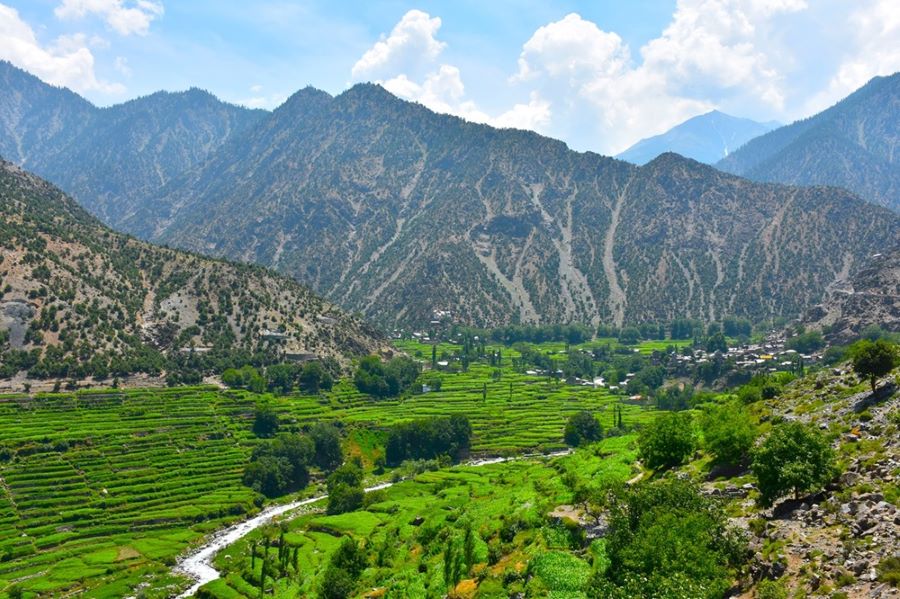
Indus-Kohistan, now divided into Lower Kohistan and Upper Kohistan districts, is well-known for its unique and distinctive culture, which has been the focus of my research and documentation for over two decades. In this article, I will specifically discuss the wooden funerary monuments in the upper Kohistan district’s three valleys: Seo, Sazin and Harban. The oldest graves, dating back to the 18th century, are now either lost or damaged, due to the harsh weather conditions. Even those built in the 19th century are in a poor state of preservation in many villages in Indus-Kohistan. As we are aware that wood is not as resilient as stone, and is prone to break, unlike stone, which is why many decorative grave railings in most of the villages in lower and upper Kohistan districts have succumbed to the vagaries of weather. Regrettably, even the surviving ones are crumbling.
There are still a few valleys where one can see some grave railings in fairly good condition and others in decay. A wooden coffin is a box made of two or three decorated or undecorated planks. It is supported by four corner posts topped by four leg-like turrets. Sometimes two middle posts are also made, thus making a total of six posts. The decorated wooden coffins are the most captivating. Each of either single or double planks is supported by wooden posts. The wooden coffin railing is sometimes placed on a wooden frame. However, the majority of grave railings are either fixed on the ground, or directly placed over stones or a raised stone enclosure. Sometimes, a wooden frame is also adorned with wavy lines or scroll patterns, adding to its aesthetic appeal and making it a true work of art.
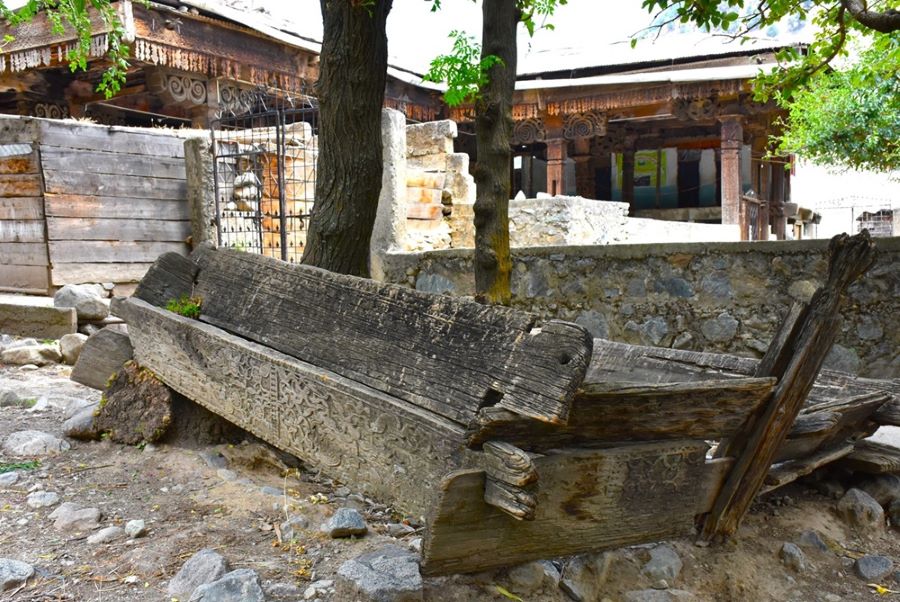
The most prominent wooden coffins or grave railings are located in the Seo graveyard, adjacent to the beautifully carved Jamia mosque (Kela Jumat). Such an ornately carved wooden mosque is not found in the whole of the Indus-Kohistan region. Although there are still old wooden mosques in Kandia, Kolai Harban and Sazin, the ornamentation in the Seo Jamia Mosque is unmatched.
Seo village is located about 8 km north of Kamila town. There are decorated and undecorated wooden railings in Seo Valley. The burial places of notables in the villages are marked with carved wooden railings. In the Seo graveyard, one can see a few decorative wooden coffins. Most carved wooden coffins are broken, and wooden planks and posts lie on the ground. A few surviving wooden grave railings are highly carved. Each face of the wooden coffin consists of two wooden planks depicting geometric and floral designs. One of the wooden grave railings shows a variety of floral patterns. Another grave in the cemetery near the Jamia mosque (Kela Jumat), shows a series of rosettes on the upper wooden plank and geometric designs on the lower. Sometimes, wavy lines or floral scrolls separate geometric designs from floral patterns. The decoration scheme on these wooden railings has mostly been repeated in most wooden coffins. Undecorated grave railings are also found in this graveyard. The majority of the old decorated grave railings now lie in dilapidated condition.
Apart from Seo village, wooden grave railings are also found in Sazin Valley, a verdant valley on the Indus’s left bank. The majority of the decorated wooden coffins have disappeared from this valley. Those described by Peter Alford Andrews and Karl Jettma (2000) in Sazin: A fortified village in Indus-Kohistan, a book published by Philipp Von Zabern, Mainz, do not exist now. Only a few decorated wooden coffins and several decorated grave railings are now found in this valley.
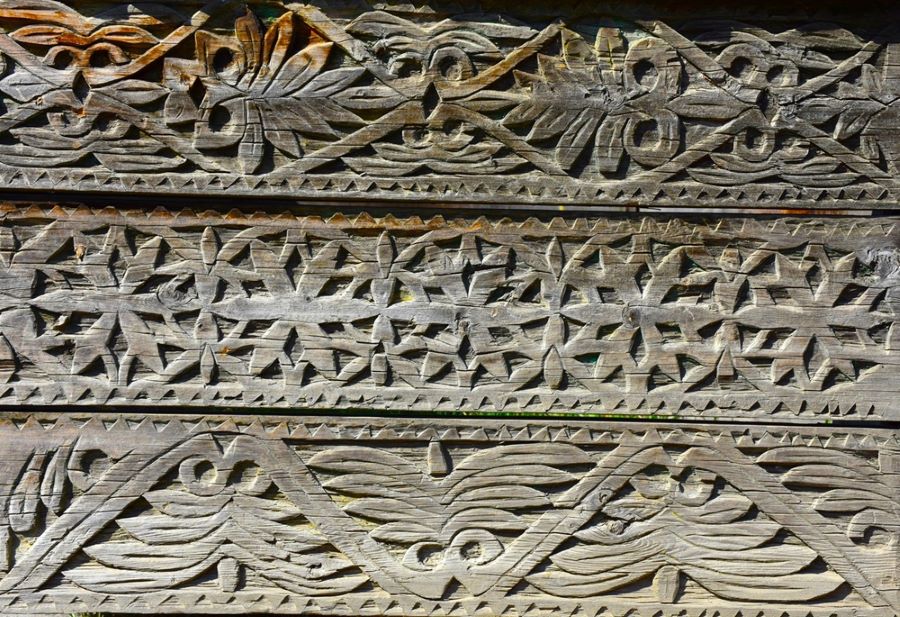
However, many decorated and undecorated wooden grave railings are in the villages of Sigemos, Masaring, Daargah, Theeng, Babeny, Darli and Harban-kot in the Harban valley. Harban-kot, the earliest and oldest settlement in the valley, holds some of the refined wooden grave railings. These carved wooden railings are located in different parts of the village and are noted for a variety of floral patterns and scrolls. These intricately carved grave railings showcase the skill of local artisans in woodwork in the Harban Valley. The wooden grave railings in Harban-kot mainly consist of three wooden planks, compared to Seo Kot village’s decorated wooden grave railings, which feature two wooden planks on each side. Mostly, undecorated wooden railings feature three and, in rare cases, four wooden planks on four sides. These are usually new grave railings. A few also bear the buried dignitaries’ names and dates of death. Even the corner wooden posts of grave railings at Harban-kot are also carved, a feature that is not found in grave railings in any other village in the Seo and Sazin valleys. On some of the posts of wooden railings, a carved ‘S’ symbol is also seen, which is not found in any other wooden coffins in the valleys of Sazin and Seo. However, one can see an ‘S’ motif on pillars in the Seo Jamia mosque. The most noticeable pillar in the Seo Jamia Mosque is located at the southern entrance of the mosque, close to the ablution area. The whole pillar is decorated with S-motifs. Each face of the pillar carries a chain of S-motifs. S symbol is also seen in other valleys of the Diamer district, notably in Thor Kot Mosque.
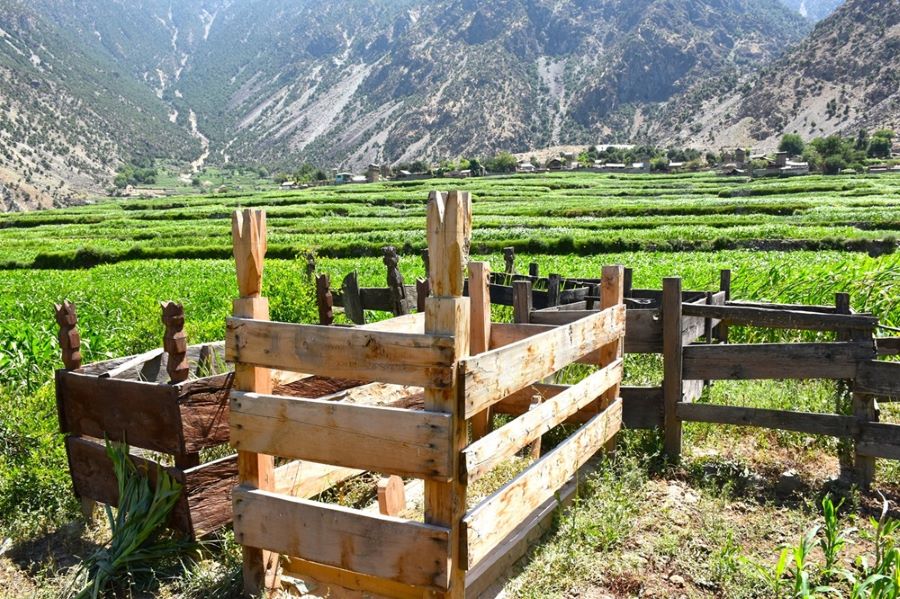
Apart from Indus-Kohistan, carved wooden railings are also found in Gilgit-Baltistan. However, they are numerous in Darel and Tangir. In Tangir Valley, they can be seen at Khamikot, Phapat, Faruri, Mahechar, Mushke, Koranga Bala, Koranga Pain, Darqali Bala, Jaglot, Loorakh and many other villages. In Darel Valley, one can see wooden grave railings at Manikyala Bala, Manikyala Pain, Yeshot and many other villages.
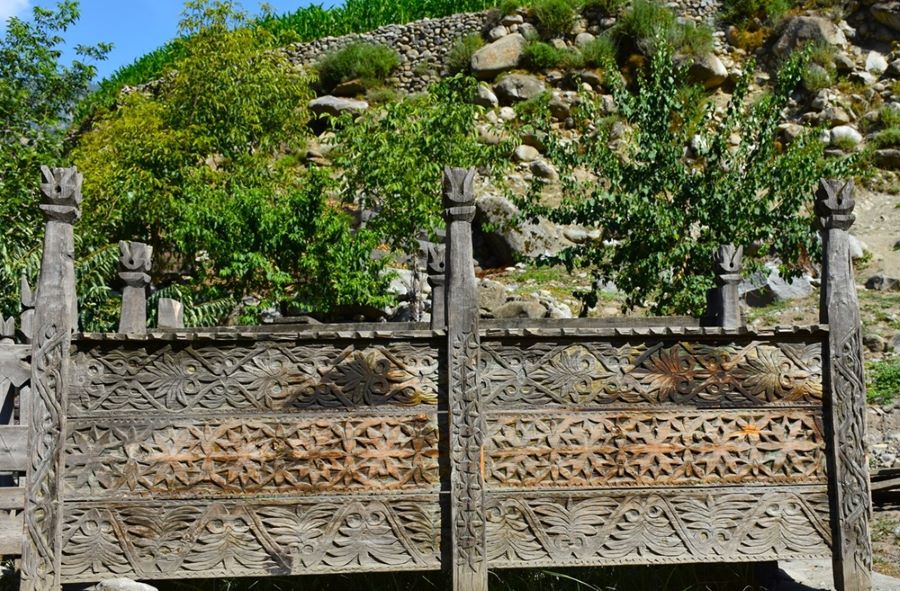
The tradition of making wooden grave railings still continues in Indus-Kohistan, albeit in a simpler and less decorated form. However, what truly sustains this tradition is the power of social memory. In both lower and upper Kohistan districts, the names of the dignitaries buried under these imposing wooden funerary monuments have not been forgotten. People still know the names of the buried dignitaries who played an important role in the society and culture of Indus-Kohistan. These fabulous pieces of art, which are fast crumbling to pieces, should be preserved for posterity. In this regard, the local community, researchers, historians, anthropologists, archaeologists, cultural preservationists and individuals interested in the cultural heritage of Indus-Kohistan should play their due part in the documentation and preservation of the carved wooden coffins that showcase the region’s history and heritage.
__________________
Published under International Cooperation with "Sindh Courier"

Comments